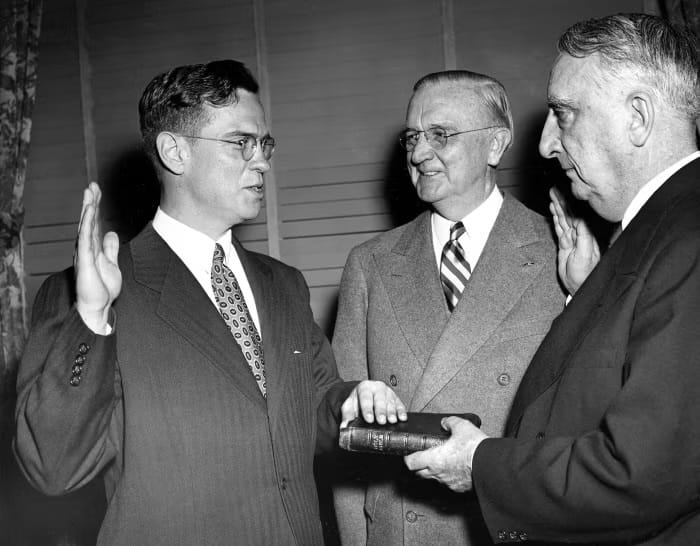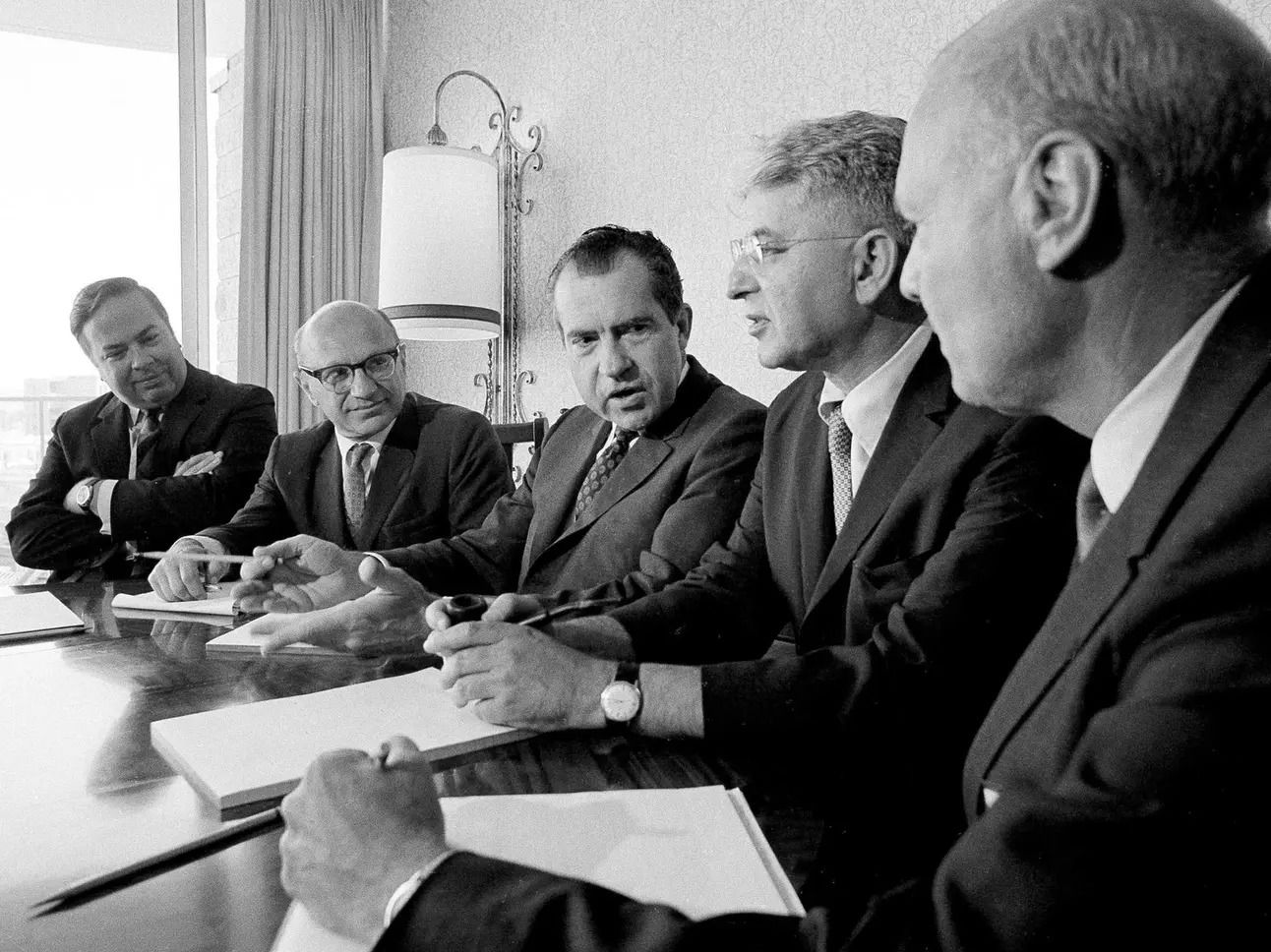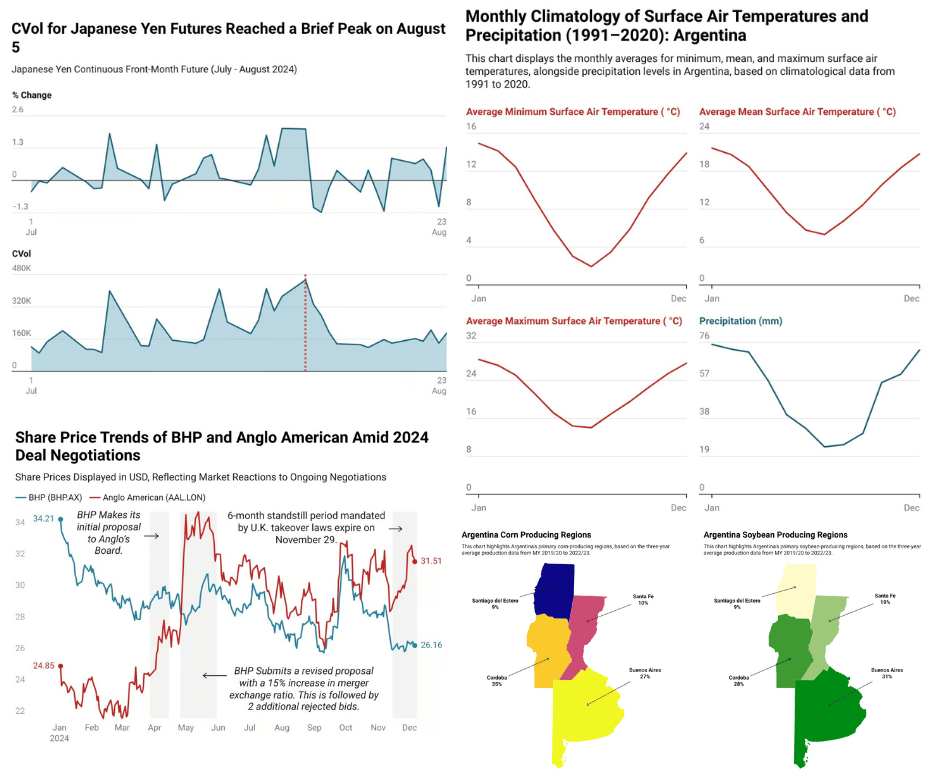
It is Nothing New
From Truman to Trump, incumbent United States presidents and their administrations have often clashed with arguably the second most important job in the country: the Chairman of the Federal Reserve. Over the past seven decades, a recurring theme in these clashes has been the pressure to keep interest rates low — either to boost voter popularity ahead of an election or to stimulate inflation during periods of economic slowdown.
When the Federal Reserve was created in 1913, its independence was not absolute. For its first several decades, the executive branch exerted significant influence over monetary policy. The Banking Act of 1935 marked a major step toward greater independence by removing the Treasury Secretary and the Comptroller of the Currency from the Fed’s Board, making the institution less partisan. A pivotal moment came with the 1951 Treasury-Fed Accord, which formally established the Fed’s autonomy from the Treasury after years of pressure to keep interest rates low to finance government debt.
Tensions between the Fed and the White House continued in later years. President Lyndon Johnson, seeking to fund the Vietnam War and Great Society programs, became furious when Fed Chair William McChesney Martin raised rates to curb inflation. Johnson summoned Martin to his Texas ranch, berated him, and even physically shoved him, but Martin stood firm, declaring that the Fed, not the president, was responsible for setting interest rates. This episode is often cited as a defining moment for the principle of Fed independence.

Pictured: April 2, 1951, William McChesney Martin is sworn in as Federal Reserve Chair while President Lyndon Johnson looks on.
During the 1970s, President Richard Nixon similarly pressured Fed Chair Arthur Burns to adopt easy money policies to boost the economy ahead of his re-election. Secret recordings and Burns’ diaries reveal intense efforts by Nixon to push for lower interest rates despite the risk of fueling inflation. Burns at times acquiesced, contributing to the inflationary spiral that defined the decade.
Ben Bernanke, former Chairman of the Federal Reserve during the financial crisis, provides a comprehensive breakdown of the periods of contention between Congress, the Fed, and sitting presidents in his recent book 21st Century Monetary Policy, it seems things really do not change. Today, Fed independence is once again under scrutiny, with President Trump at odds with Chairman Jerome Powell over the age-old complaint that “rates are too high.”

Looking for unbiased, fact-based news? Join 1440 today.
Join over 4 million Americans who start their day with 1440 – your daily digest for unbiased, fact-centric news. From politics to sports, we cover it all by analyzing over 100 sources. Our concise, 5-minute read lands in your inbox each morning at no cost. Experience news without the noise; let 1440 help you make up your own mind. Sign up now and invite your friends and family to be part of the informed.

Powell and Trump Clash
In April 2025, tensions between President Donald Trump and Federal Reserve Chair Jerome Powell escalated sharply. Frustrated by the Fed’s decision to hold interest rates steady despite what he viewed as cooling inflation, Trump ramped up his public criticism, labeling Powell a “major loser” and suggesting that firing him could not happen fast enough. Trump argued that the Fed’s refusal to cut rates risked slowing the economy, particularly as his own tariff policies were already putting upward pressure on inflation and growth.
Behind the scenes, White House lawyers reportedly explored the legal feasibility of removing Powell, intensifying market fears over the Fed’s independence. However, after several days of turmoil and rising anxiety in financial markets, Trump publicly backed off, telling reporters he had “no intention of firing” Powell. This statement helped calm markets and sparked a rebound in equity futures.
Despite this public de-escalation, analysts and former officials warned that the underlying conflict remained unresolved. The episode exposed the vulnerability of central bank independence in a highly politicized environment and raised concerns about the potential for future confrontations, especially as Trump continued to assert his right to criticize and attempt to influence monetary policy decisions.
Trump’s threats also sparked widespread debate about the legal and institutional limits of presidential power over the Federal Reserve. While the law states that Fed governors can only be removed “for cause”—typically interpreted as misconduct, not policy disagreement—the statute is ambiguous regarding the removal of the Fed chair specifically. Powell has maintained that he is protected from removal without cause, and most legal experts agree, though the issue has never been fully tested in court.

Why is Fed Independence Important
NC State’s Pool Thought Leadership credits the Volcker Era marked a turning point for U.S. monetary policy. Confronting stagflation in the 1970s, Fed Chair Paul Volcker raised interest rates sharply in the early 1980s, triggering a recession but successfully restoring price stability. His actions laid the groundwork for decades of low inflation and steady growth. Later, during the 2008 global financial crisis and again during the 2020 COVID-19 pandemic, the Fed played a central role by cutting rates and using quantitative easing to stabilize financial markets. However, when inflation surged in 2022, the Fed reversed course and raised rates rapidly to cool the economy.
Comparing the Contemporary Roles of the Treasury and Fed Via Investopedia
Role | U.S. Treasury | U.S. Federal Reserve |
|---|---|---|
Primary Role | Managing the finances of the U.S. federal government | Managing the nation's money supply |
Key Function | • Managing the national debt | • Conducting monetary policy (setting interest rates, managing reserves) |
Policy Tools | • Oversees government remittances | • Interest rate adjustments (federal funds rate ) |
Goals | • Fund government operations | • Maintain price stability (control inflation) |
Account-ability | Reports to the president and Congress | Independent within the government, reports to Congress |
Throughout its history, the Fed has faced political pressure from elected officials, particularly when monetary policy conflicted with short-term political goals. Examples include President Truman’s post-war debt concerns, Nixon’s push for low rates in the early 1970s as previously mentioned, and President Trump’s criticism of Jerome Powell for not cutting rates aggressively. Despite such pressures, the Fed’s commitment to operational independence—cemented by the 1951 Treasury-Fed Accord—has generally supported long-term economic stability.

Pictured: Presidential nominee Richard Nixon poses with a team of economic advisers in San Diego, CA, Aug. 14, 1968. From left to right; Dr. Pierre A. Rinfret; Dr. Milton Friedman; Nixon; Dr. Arthur Burns; Dr. Don Perlberg. Via Associated Press.
Critics of Fed independence argue that it concentrates power in the hands of unelected officials, raising concerns about democratic accountability. Others claim that Fed policies, especially low rates and quantitative easing, have exacerbated wealth inequality and sometimes worsened economic imbalances, such as contributing to the 2008 financial crisis. Nonetheless, historical evidence shows that economies with independent central banks, like Canada, Japan, and the European Union, tend to enjoy greater economic stability compared to countries where political interference in monetary policy is common.

Is It Different This Time?
It remains uncertain whether President Trump will move to remove Federal Reserve Chair Jerome Powell. According to Politico Treasury Secretary Scott Bessent has warned the White House that firing Powell could trigger financial market turmoil, though top adviser Kevin Hassett said the administration is still “studying the matter.” Analysts, including Ian Lyngen of BMO Capital Markets, cautioned that Trump’s rhetoric could eventually translate into action even though Trump stated he had no intention of firing the chair. Lyngen noted that any attempt to remove Powell could lead to a Supreme Court battle and would likely intensify market uncertainty, putting additional downward pressure on U.S. assets.
Arguably the greatest threat to markets if fed independence is questioned is the cycle of inflation expectations. Morningstar explains that the Fed is accountable to Congress, but it makes monetary policy decisions related to its mandate—low, stable inflation and maximum employment—independently from both the legislative and executive branches. This separation is intentional.
“Country after country has discovered that central bank independence is essential for fighting inflation,” says economist Robert Angel to Morningstar. He explains that when politicians control the money supply, they often fall into the temptation of printing too much money to stimulate short-term growth. In the short term, the Fed can lower interest rates by buying government bonds, pushing down yields, encouraging more bank lending, and boosting household and business spending.
However, this approach carries long-term risks. “Unfortunately, as that money works its way through the economy, all that extra money chasing the same amount of goods and services pushes prices higher, making inflation worse later on,” Angel notes. “Printing more money is exactly the wrong thing to do at this time.”
Inflation is notoriously difficult to correct—something the recent years of stubbornly high price pressures have demonstrated. Yet rising prices also weigh heavily on consumer sentiment and provide a potent political issue. “The Fed is always between a rock and a hard place,” Angel says. “If they print too much money, they cause inflation. If they print too little, they risk economic stagnation.”

Congratulations on making it to the end, while you’re here enjoy these other newsletters and be sure to subscribe to The Triumvirate before you go.

Interested in How We Make Our Charts?
Some of the charts in our weekly editions are created using Datawrapper, a tool we use to present data clearly and effectively. It helps us ensure that the visuals you see are accurate and easy to understand. The data for all our published charts is available through Datawrapper and can be accessed upon request.







